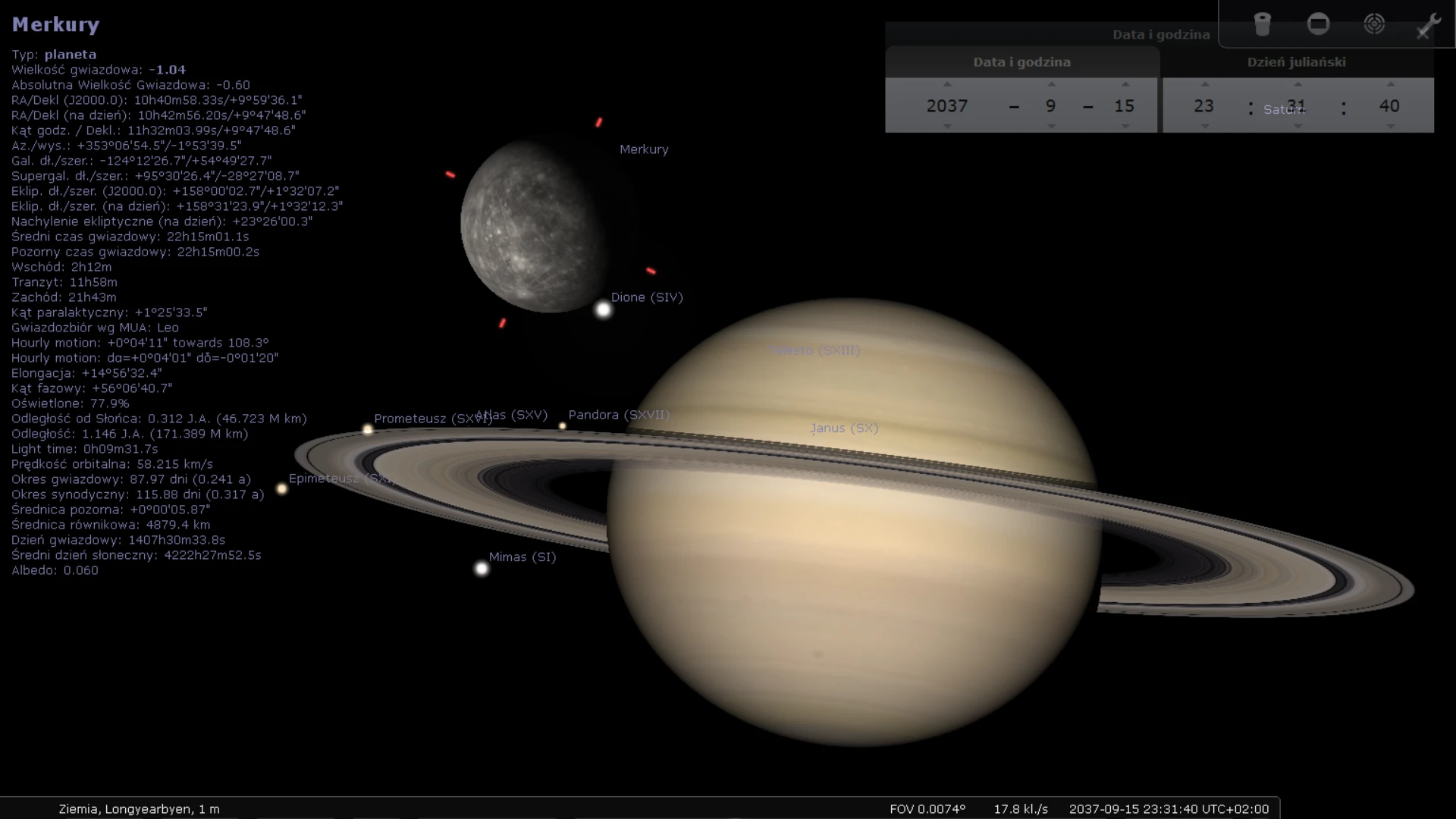This text is somewhat the continuation of the previous one, tailored for the most unique celestial events or group of celestial events, which will occur in the 2021-2030 decade. This time you will read about 10 of the best occurrences in the sky within the next 20 years. Some of the astronomical events described in my previous article will repeat after 2030. Furthermore, their uniqueness will be bigger, because of the more spectacular planet configuration in the sky, and so on. Finally, an article like this one is needed in order to round off this topic as much as I can. However the repeatability of some celestial events brings another, further dates inevitably, what you could read about previously i.e. when the Venus occultation of Regulus in 2044 was mentioned. Anyhow, let’s get started.
1. MAJOR LUNAR STANDSTILL 2024-2025
The major lunar standstill occurs when the ascending lunar node coincides with the vernal equinox (right ascension 0h). In this event the lunar declination extremes take place. The maximum Moon’s declination can be as high as 28.58151 and the minimum as low as -28.58151. Because of lunar orbit precession, the lunar nodes move gradually westward, encircling the whole orbit after a period of 18.6 years. At halfway through this period, the situation is the opposite, when the ascending node coincides with the autumn equinox. In this case, the extreme lunar declinations are flattened by the lunar orbit inclination to the ecliptic plane – 5,145 degrees. In turn, the Moon can be as high as 18.29151 degrees north and as low as 18.29151 south from the ecliptic plane. It’s not spectacular for us, as the Sun reaches the declinations accordingly +23.43651 and -23.43651 every year. On the contrary, the major lunar standstill is fairly worth attention, as the Moon might both reach unusual altitudes in the sky as well as be visible for extraordinarily long during the given day (Pic. 1).
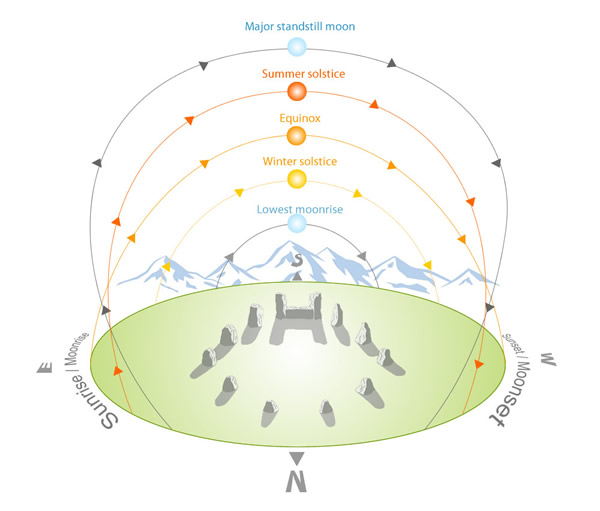
It’s obviously translated into regions, where the Moon can be seen roughly at its zenith as well as being visible for the entire day, unless the declination changes rapidly, which is typical for this period. Considering for example the northern hemisphere, the Moon can be seen at the zenith further north of the Tropic of Cancer simultaneously without any set further south of the north polar circle (Pic. 2).

The major lunar standstill itself is a one-day event, although its aftermaths are observed around 1.5 years before and after, which has been widely explained in my previous article.
The nearest major lunar standstill will occur in March 2025, the next one is to be observed in September 2043.
2. THE LONGEST TOTAL SOLAR ECLIPSE IN XXIth CENTURY ON LAND
The total solar eclipse on August 2, 2027, appears to be the longest total solar eclipse in the XXIst century on land with a maximum duration of 6m22s. The longest total solar eclipse in the XXIst century occurred on July 22, 2009, with a duration of 6m39s, although the longest eclipse fell away from land, just north of the Philippine Sea, making the longest duration on land 5m59s only.
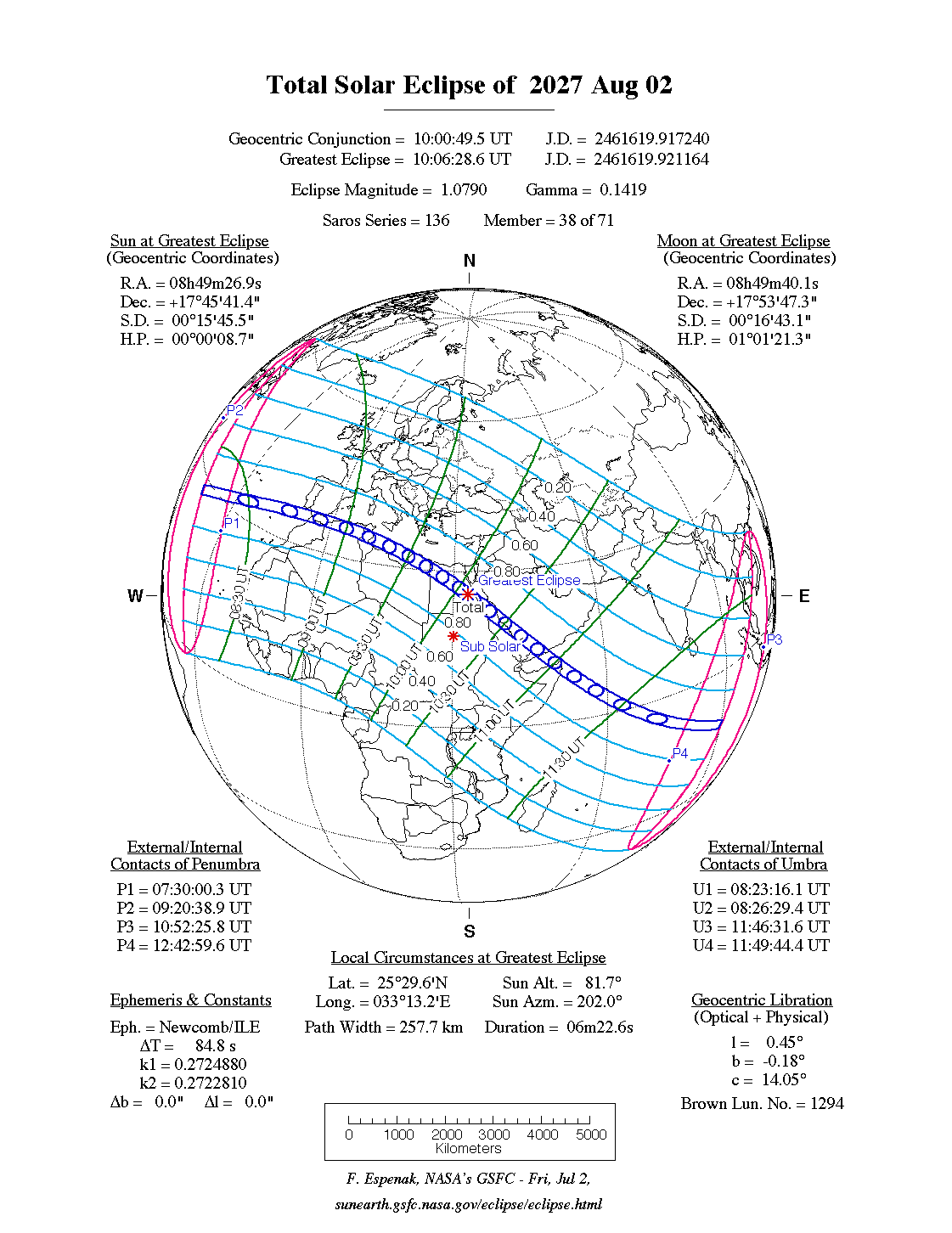
Moreover, the path of the 2027 total solar eclipse goes across the Sahara desert, where the frequency of bad weather is really low. If you want to watch this eclipse in another location, please read this article about the long-term planning of astronomical expeditions.
3. VENUS CLOSE MEETING WITH THE STARS AND CLUSTERS (PLEIADES, REGULUS, AND OTHERS, PI SAGGITARI OCCULTATION IN 2035).
Undeniably the best observation experience applies to admiring Venus passing the Pleiades cluster (M45). In modern times we couldn’t see it by far, as our neighbor planet used to pass this cluster within a few arcminutes distance, making the conjunction only. It will definitely change in 2028 when Venus returns to this cluster and almost grazes the Meropa star. In the southern hemisphere observers won’t be able to distinguish these 2 objects by the naked eye I guess.
In 2036 Venus will pass the Pleiades almost centrally, making an even greater celestial event. The planet will visit the Pleiades cluster until 2060.

An analog occurrence applies to the Beehive (Praesepe, M44) cluster, which Venus will pass on July 3, 2021, July 3, 2029, and July 2, 2037. These events can be visible from lower latitudes, although the Beehive cluster won’t be passed by Venus centrally. The almost central passes of the Beehives cluster will occur on July 17, 2024, July 17, 2032, and July 16, 2040. They won’t be visible as the Beehive cluster is too close to the Sun this time.
Another interesting conjunction of Venus will apply to the Regulus star. Both bodies will meet closely with each other on October 3, 2028, and October 3, 2036. The second one will immediately precede the Venus occultation of Regulus in 2044.
Apart from Regulus, there are also other popular stars, which will be passed by Venus closely:
– Rhi Saggitari (21.02.2022, 22.02.2030, 22.02.2038)
– Zavijava (13.08.2021, 13.08.2029, 13.08.2037)
– Lambda Saggitari (17.11.2024, 17.11.2032 16.11.2040)
– Nunki (19.11.2021, 19.11.2029, 18.11.2037)
and finally, the Pi Saggitari (17.02.2027 and 17.02.2035), which will be occulted by this planet on February 17, 2035. Unfortunately, the event will be theoretically visible from Antarctica only. Taking into account the polar day at that location, we are completely without any chances at all. The one reasonable location, where we could technically try to catch this event is the Indian Ocean several hundred km southwest of the Australian coast (Pic. 5, 6).
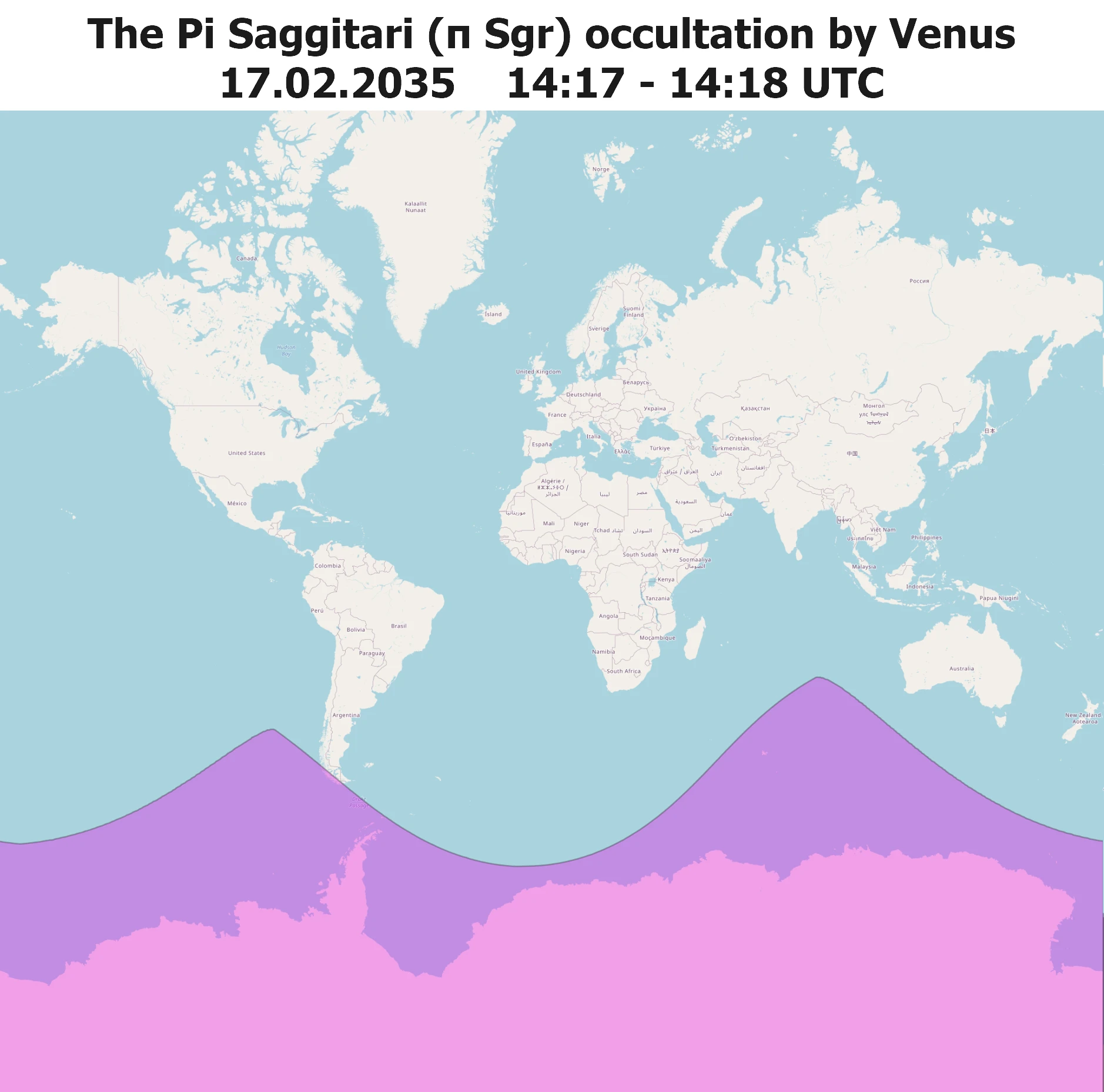

4. 99942 APOPHIS CLOSE APPROACH (13.04.2029)
The 99942 Apophis is a near-earth asteroid, which can be potentially dangerous for us. The closest approach to the 99942 Apophis is estimated to occur on April 13, 2029. The asteroid will be closer than geostationary communication satellites. The closest approach to Earth will result in about 3.1 Mag brightness, making this object visible in the night sky. In the previous article, I presented the estimated track of this asteroid across the sky. The most interesting will be its conjunction with Regulus (Pic. 7).

5. THE LARGEST LUNR ECLIPSE IN XXIst CENTURY
The largest lunar eclipse in the XXIst century will occur on June 26, 2029. This is obviously the central lunar eclipse, where Earth’s shadow passes closely to the Moon’s disk center. The deep total lunar eclipses can be observed at most once a decade because the eclipse occurrences are related to lunar orbit precession, which lasts 18.6 years.
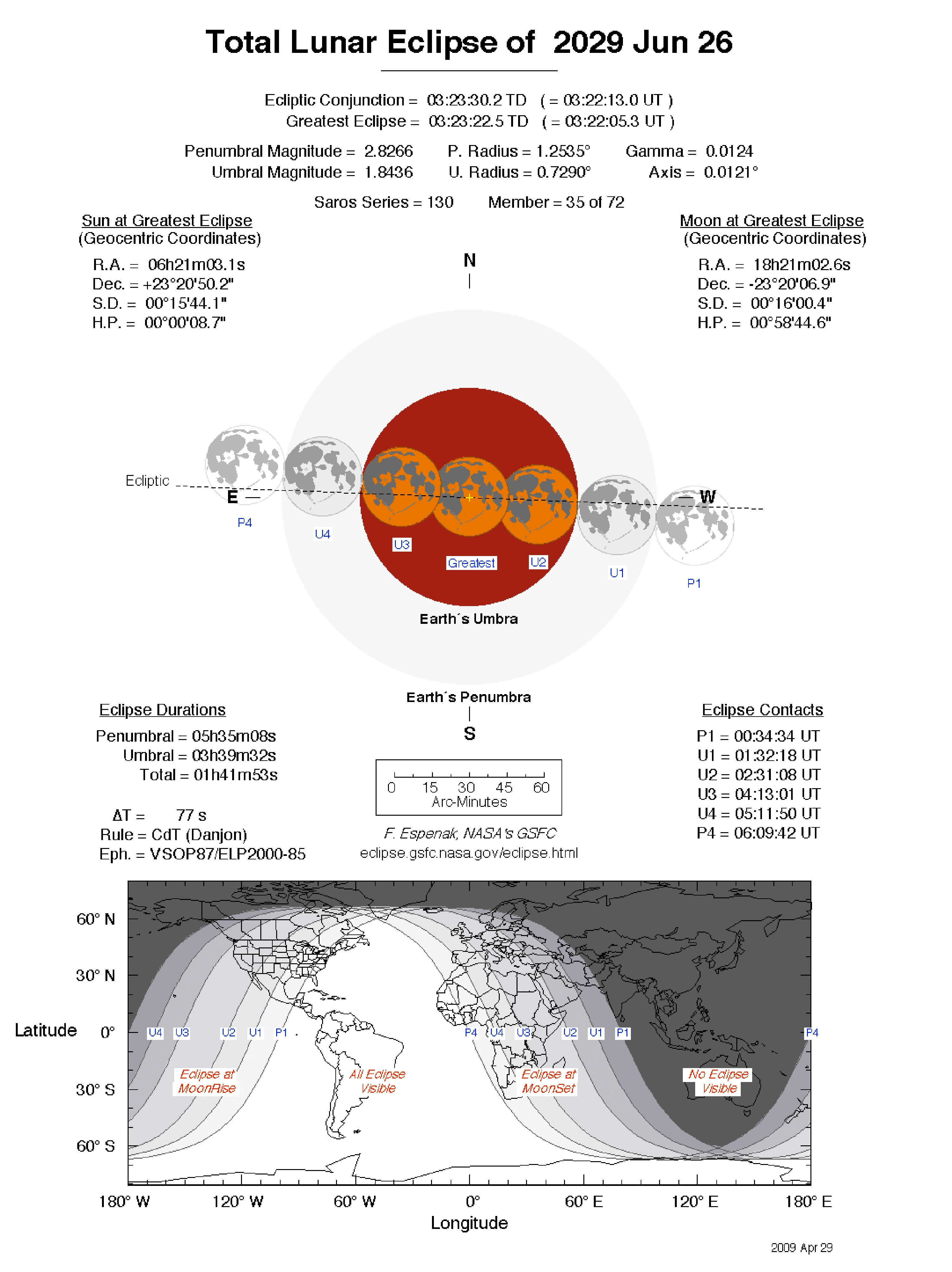
6. CONJUNCTION OF MARS & MOON AND VENUS IN THE CENTER OF THE MILKY WAY
It will be the most beautiful conjunction within the concerned period of time. On November 9, 2029, the crescent Moon will pass Venus and Mars in conjunction with the center of the Milky Way beyond (Pic. 9). The Venus & Mars pairing occurs in series (32 years cycle). The next situation such as this will happen in 2061.
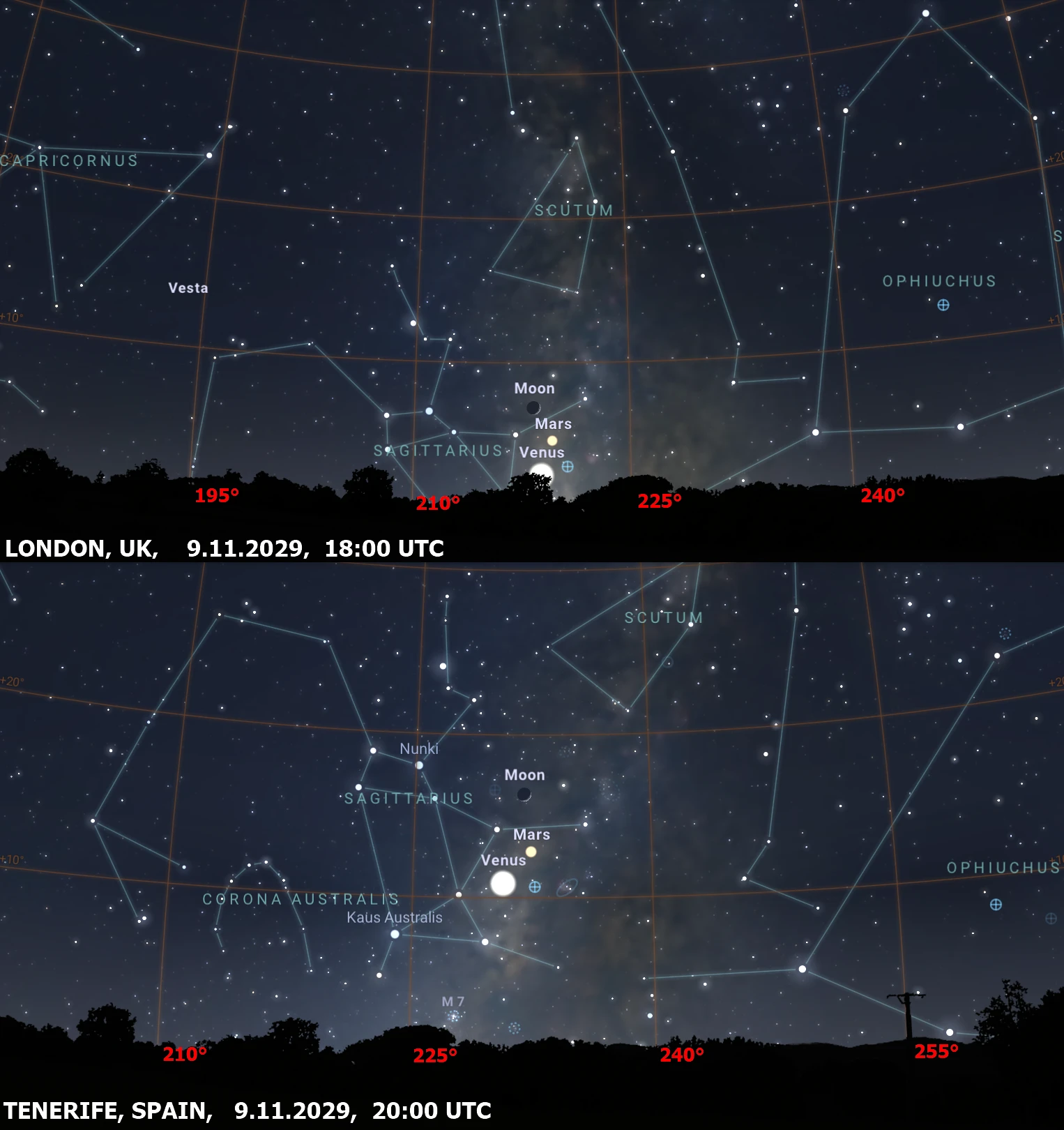
7. GREAT CONJUNCTIONS OF THE PLANETS (WITH ANGULAR SEPARATION SMALLER THAN 1′)
There are a lot of big conjunctions between the planets. It’s hard to point out the most spectacular one. There are some important aspects, which might decide the success of the observation such as this. I’ve decided here to list all the conjunctions, which approaches are smaller than 1′, which is the threshold separation for distinction by the human eye. However, not all of them will be visible perfectly, as we have to face the significant brightness difference, where the bright planet might outshine the smaller one. Another matter is the angular distance to the Sun, which must be at least 18° if we want to have our observation successful. Because this article covers twice longer time than the previous one I decided just to list all of them with brief descriptions or images instead of a granular characterization of every single one like previously. It will be definitely the subject of elaboration in 2030 I think.
– Great conjunction of Venus and Neptune (27.04.2022, 15.02.2023, 8.05.2035), with a minimum separation of 6,6″ in 2022.
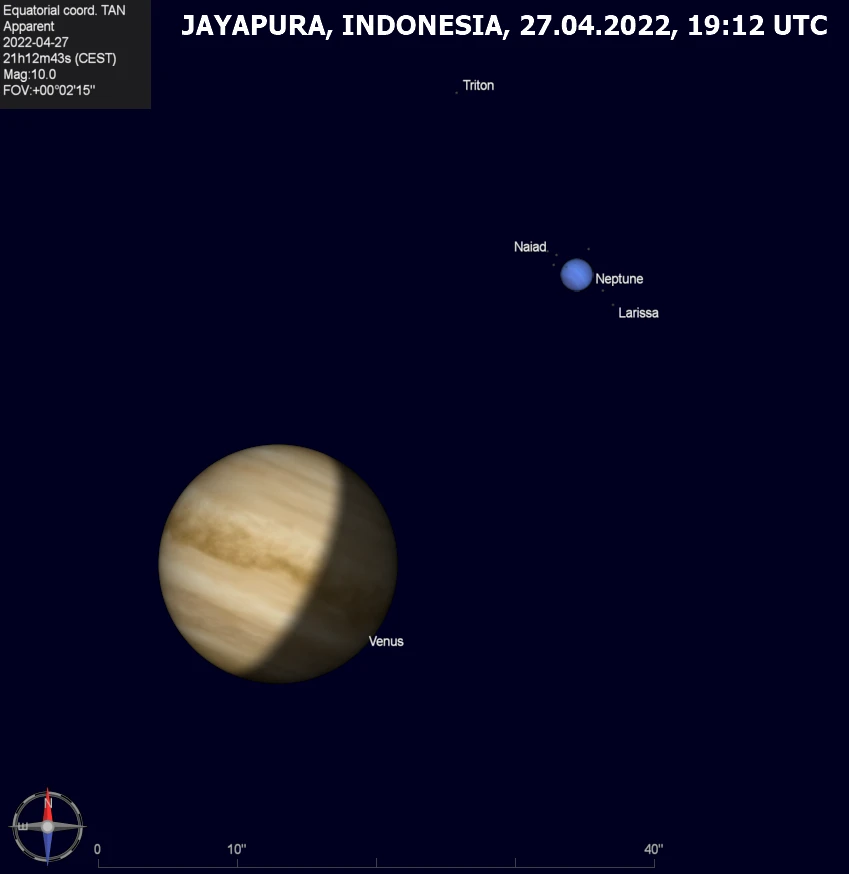
– Great conjunction of Mercury and Mars (23.08.2032) with angular distance to the Sun 13° only and just 7″ separation between them.
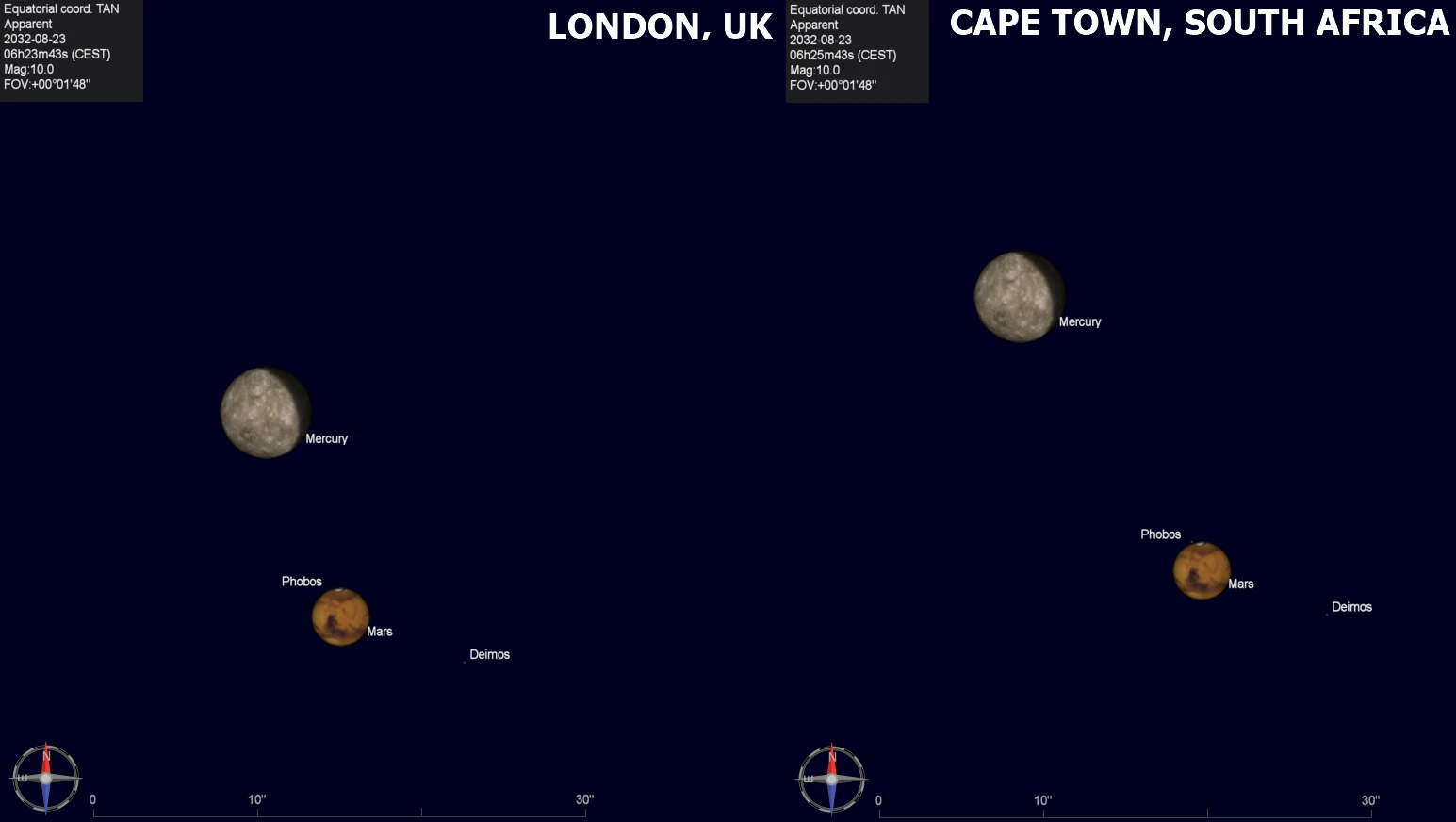
– Close approach of Venus and Saturn – both planets will meet each other within just 5′, although Venus will almost graze the Saturn satellite system, passing by Mimas just within 1′ and Tytan within 3′ (Pic. 11).

The event will be visible only southeast of Japan’s mainland.
– Very close approach Mercury to Saturn (15/16.09.2037) – the unsung and extremely rare celestial event, which will happen in the Northern Hemisphere. Everywhere north of 3 latitudes, Mercury will pass closer than 10″ to Saturn. As latitude grows the distance between these 2 bodies will be reduced smoothly. In the Arctic, the angular distance between Mercury and Saturn will be just 1,8″, whereas Mercury will almost touch Dione. This is the greatest planet conjunction known before 2065 when Venus will transit Jupiter’s disk. Regrettably, the event will take place quite close to the Sun, so its visibility will be very restricted (Pic.12). The occultation will be partial, but near the North Pole, away from the Svalbard archipelago, Mercury will plunge into Saturn almost completely (Pic.13).
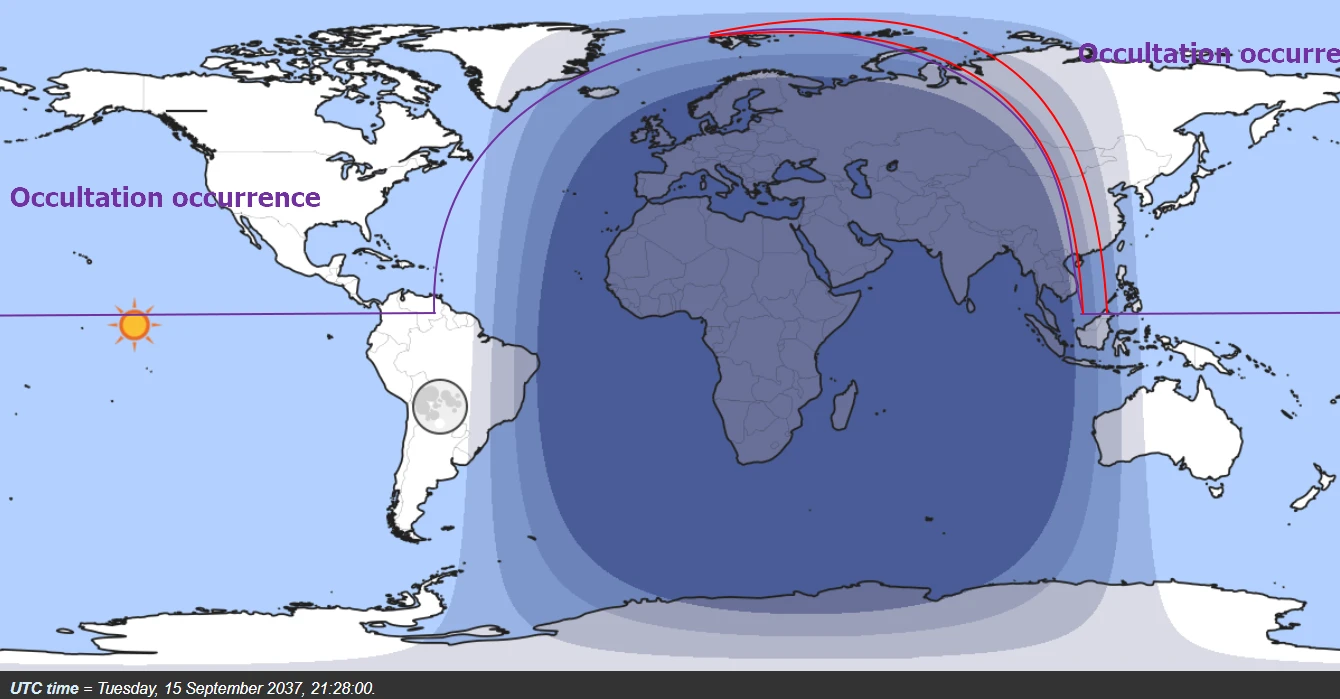

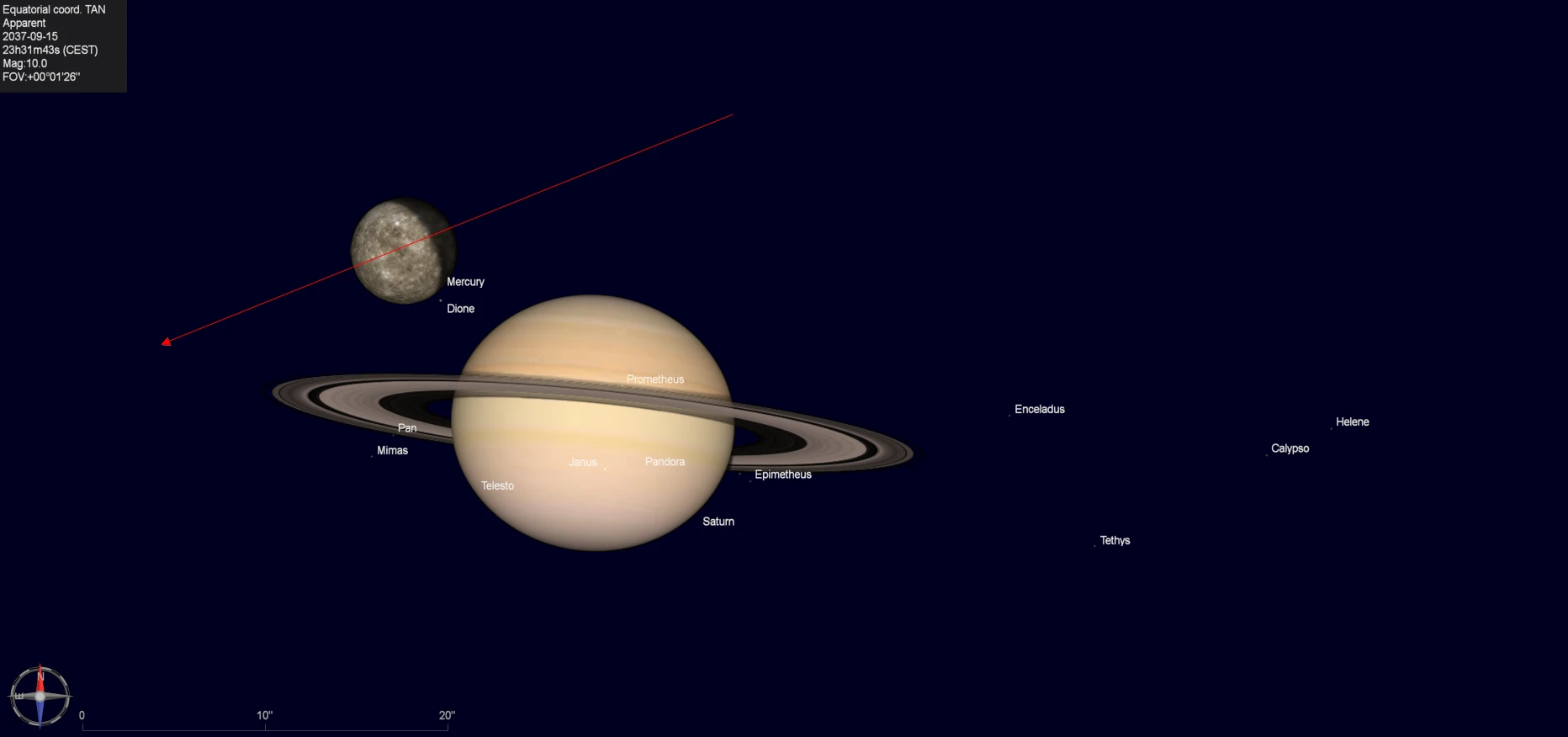
The whole event will last up to 7 minutes, with its peak about 1m30s when approaching Dione closer than 0,5″. Before and afterward, both planets will move away from each other gradually.
– Great conjunction of Mercury and Neptune, which will happen just about 16 degrees away from the Sun. It will be hard to chase these 2 bodies together, but maybe we can try?

8. TRANSIT OF MERCURY ACROSS THE SUN (12/13.11.2032, 5/6.11.2039)
This event occurs quite often in the sky in the spans of time between 3.5 and 13 years, usually in pairs. The last pair of transits were observed in 2016 and 2019. The next one will occur in 2032 and 2039 (Pic. 17, 18).
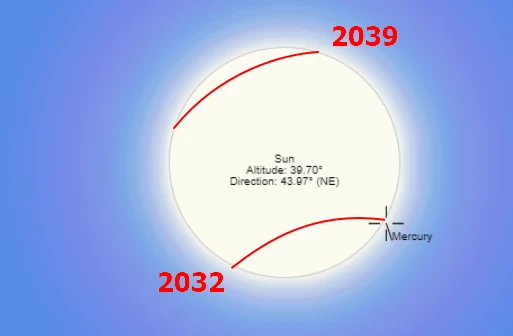
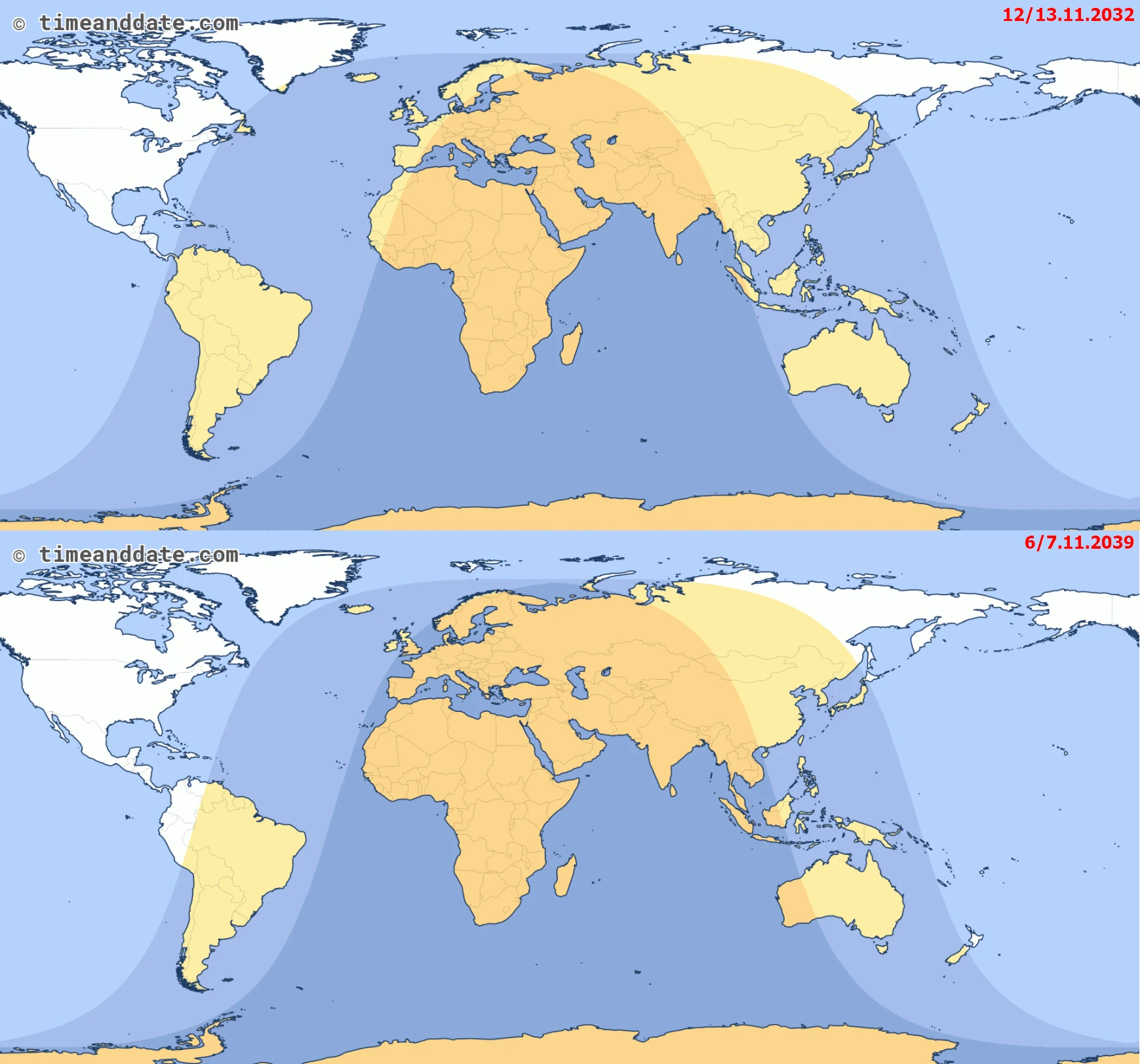
9. THE GREAT OPPOSITION OF MARS (15.09.2035)
It will be the greatest opposition to the Red Planet since August 2003, when Mars was just 55,76 million kilometers from the Earth. In September 2035 Mars will be as close as 56,91 million kilometers, which will make it the 4th brightest object in the sky after the Sun, Moon, and Venus. The brightness of Mars will reach -2,8 Mag, therefore we will have an opportunity to spot this planet by the naked eye before sunset or still after sunrise like you see below (Pic. 19)
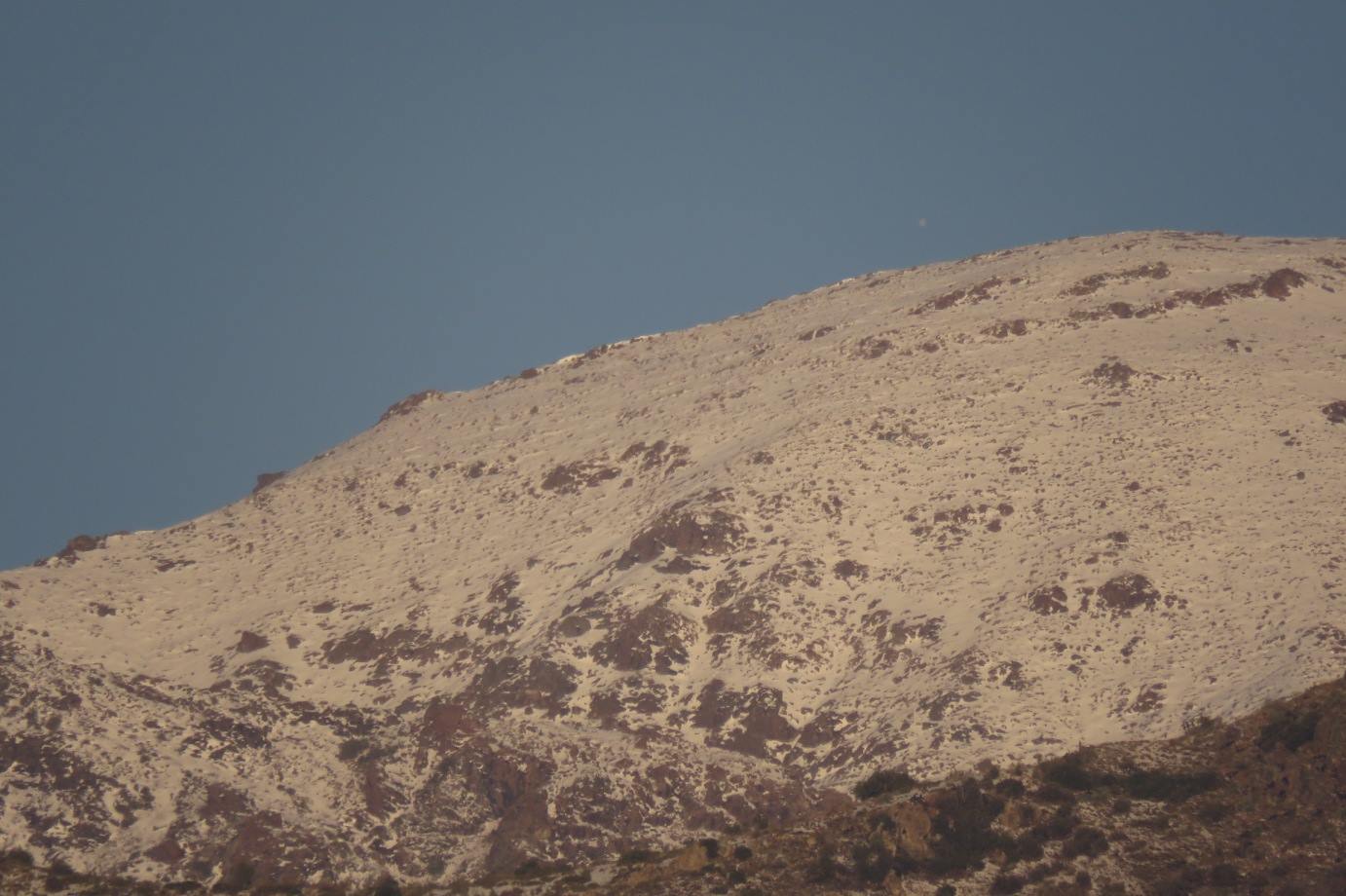
Obviously, the best chances to see it occur when the Moon passes nearby. Then we don’t need to spend much time searching the bright planet.
The next great conjunction of Mars will happen in 2050 when the planet will be as close as 55.96 million kilometers to Earth with a maximum brightness of -2,87 Mag.
10. QUINTUPLE PLANETARY GROUPING (SEPTEMBER, 2040)
It’s the so-called Grand planet conjunction, which will occur in September 2040. The most important day will be September 8, when the crescent Moon will pass by Saturn closely. The event, when all the planets are grouped in the sky is called the quintuple planetary grouping and includes all the planets visible by the naked eye. Recently I showed you a few periods throughout the 2021-2030 decade when an observer will be able to watch all the visible planets in the sky at the same moment. Events such as this will occur also in the 2031-2040 decade, although the point is, that all these planets are separated far away from each other and usually spread along the ecliptic line across almost the entire sky or at least a two/third of the sky, like in June 2022. The quintuple planetary grouping is the event, in which all the visible planets from ancient times aren’t located throughout the entire sky, but they appear to be grouped quite close to each other. As far as the calculations are concerned, this separation is not bigger than 40°, however predominantly it doesn’t exceed 25°(Meis, Meeus, 1994). The September 2040 occurrence is so unique because all the planets will be grouped within just 9°19′! The last similar gathering was observed on February 14, 1186, with a separation, just 8°52′ and there is no closer approach than 10 degrees before AD 2735. You can imagine then how extremely rare this event is. For the sake of curiosity, the closest quintuple planetary grouping was observed in BC1952 and it was barely 4°20′.
The last quintuple planetary grouping occurred on May 17, 2000, when the total separation was 19°28′. The next one afterward will be observed in 2060.
Unfortunately, the northern hemisphere won’t be favorable for watching the formidable trapezium in the sky. All of the bodies will set shortly after the Sun. The civil twilight might completely outshine objects such as Mercury, Mars, or Saturn. The closest latitude, which can make our observation successful is around 20° north. Combining it with the closest approach of the crescent Moon to Saturn, we should consider the middle Atlantic locations (Canary Islands, Cape Verde) (Pic. 19).

Mariusz Krukar
References:
- de Meis S., Meeus J., 1994, Quintuple planetary groupings – Rarity, historical events and popular beliefs, (in:) Journal of the British Astronomical Association, vol.104, no.6, p.293-297
Links:
- Moon Swings – The Lunar Standstill Cycle
- https://www.universetoday.com/tag/mars-opposition/
- https://cseligman.com/text/planets/marsoppositions.htm
- https://spider.seds.org/spider/Mars/marsopps.html
- Dual planetary occultations and others
- https://astronomy.com/magazine/stephen-omeara/2019/01/naked-eye-mars-in-daylight
- https://earthsky.org/astronomy-essentials/10-surprising-things-to-see-in-the-daytime-sky/
- Mutual occultations of planets between 2000BC and 3000AD
Wiki:
Youtube:

